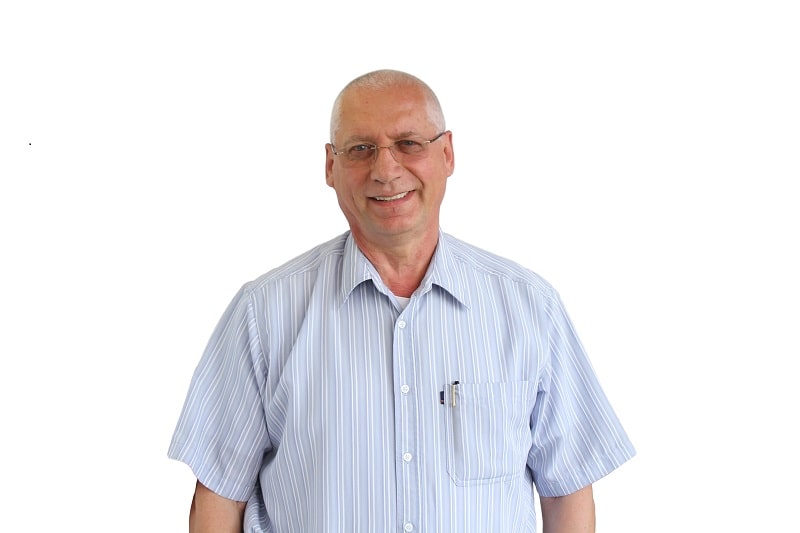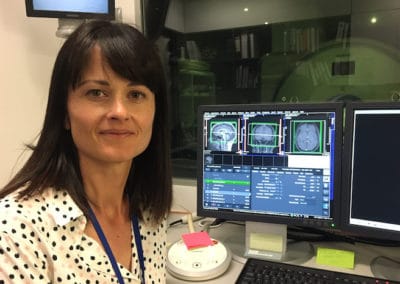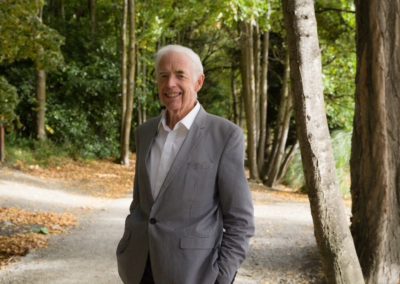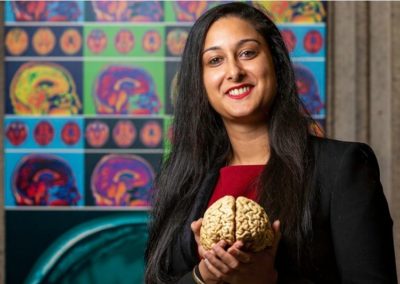Prof Valery Feigin has done it again. After creating his award-winning Stroke Riskometer app in 2013, he has just launched another valuable tool for stroke prevention and recovery: Stroke.net.nz, a website focused on self-managed rehabilitation.
Valery, a BRNZ Principal Investigator and Director of the National Institute for Stroke and Applied Neurosciences at AUT, is a world-leading stroke expert. His new website – created in collaboration with Dr Alexandr Merkin, Dr Rita Krishnamurthi, Dr Kelly Jones, and Rohit Bhattacharjee (all from AUT) – is a response to the increasing threat of stroke to the sustainability of the health system.
Valery explains: “Stroke recovery is an ongoing process and it does not stop at hospital discharge. Although usually most of stroke recovery happens within the first 3-6 months after stroke onset, in some patients it continues for many months and even years. However, availability of outpatient stroke rehabilitation services is already extremely limited after hospital discharge and even when it is provided it is usually provided for only 2-3 months.”
“As the number of people who survive stroke continues to increase all over the world, this problem is increasing very fast. In this situation, the only affordable/feasible solution for stroke survivors is self-management (self-rehabilitation) when they can drive their own recovery for as long as needed.”
To be effective, these self-managed interventions would need to be available to stroke survivors and their family members “at any time, as long as required, and in virtually any setting (e.g. home, rest-home etc.) with minimum input from health professionals.”
When Valery realised that there were no such self-management programmes available anywhere, he decided to establish the New Zealand Stroke Education Charitable Trust. Its newly launched website features a series of videos (and DVDs) on stroke care and rehabilitation available for a minimal cost. The videos demonstrate rehabilitation procedures – from muscle strengthening and fatigue management to bathing and walking – and show how to manage everyday life when recovering from a stroke. The practical demonstrations are accompanied by easy-to-understand explanations from health professionals.
Valery states, “Providing videos in tutorial, easy-to-follow format seems to be the most feasible and cost-effective way to improve recovery compared to conventional rehabilitation face-to-face interventions with rehabilitation specialists, which most of stroke patients and their families simply cannot afford because of the cost associated with these interventions.”
According to Varley, self-management interventions should be based on the best available evidence and be culturally appropriate and affordable in order to be effective. The videos employ a role-model tutorial approach, where the procedures are shown by people of different ages, sex and ethnicity. What makes the videos even more unique is that most material is presented by actual stroke survivors and their family/caregivers rather than actors. Thus, the viewers can associate themselves with actual survivors and their caregivers, and think, “If they can do it, then I can too.”
The videos have already been tested by Dr Kelly Jones and her team at the National Institute for Stroke and Applied Neuroscience at AUT in a controlled trial in six countries, and have proved highly acceptable.
And Valery’s work doesn’t stop there. He aims to make his videos available to as many stroke survivors and their families as possible: “Our charitable trust is determined to make all these rehabilitation video clips completely free of charge to all New Zealanders (including health professionals) and people from other countries.” The trust encourages governments and other organisations to get in touch if they are interested in licensing the videos and making them available for more people around the world. Valery is convinced that they can make a difference: “We believe that the wide use of these videos can improve stroke recovery, reduce pressure on our health care facilities and eventually save millions of dollars of tax payers’ money for the country.”
Suffering a stroke is a life-changing event – for the patient, their family and caregivers. They need accessible and practical resources that help them understand the condition and manage the aftermath. Tools like Valery’s website give them a real opportunity to take charge of their recovery.



